
The Arcade in Cleveland, Ohio (built 1890), looking south toward Euclid Avenue: photo by Martin Linsey for Historic American Building Survey, 7 March 1966 (Library of Congress)
"In speaking of the inner boulevards," says the Illustrated Guide to Paris, a complete picture of the city on the Seine and its environs from the year 1852, 'we have made mention again and again of the arcades which open onto them. These arcades, a recent invention of industrial luxury, are glass-roofed, marble-paneled corridors extending through whole blocks of buildings, whose owners have joined together for such enterprises. Lining both sides of these corridors, which get their light from above, are the most elegant shops, so that the arcade is a city, a world in miniature, in which customers will find everything they need. During sudden rainshowers, the arcades are a place of refuge for the unprepared, to whom they offer a secure, if restricted, promenade -- one from which the merchants also benefit.”
This passage is the locus classicus for the presentation of the arcades; for not only do the divagations on the flâneur and the weather develop out of it, but also, what there is to be said about the construction of the arcades, in an economic and architectural vein, would have a place here.
Walter Benjamin, Das Passagen-Werk / The Arcades Project, 1927-1940, ed. Rolf Tiedeman, 1982, trans. Howard Eiland & Kevin McLaughlin, 1999: Convolute A: Arcades, Magasins de Nouveautés, Sales Clerks
The covered shopping arcades of the nineteenth century were Benjamin's central image because they were the precise material replica of the internal consciousness, or rather, the unconscious of the dreaming collective. All the errors of bourgeois consciousness could be found there (commodity fetishism, reification, the world as "inwardness"), as well as (in fashion, prostitution, gambling) all of its utopian dreams. Moreover, the arcades were the first international style of modern architecture, hence part of the lived experience of a worldwide, metropolitan generation. By the end of the nineteenth century, arcades had become the hallmark of a "modern" metropolis (as well as of western imperial domination), and had been imitated throughout the world, from Cleveland to Istanbul, from Glasgow to Johannesburg, from Buenos Aires to Melbourne. And as Benjamin was well aware, they also could be found in each of the cities that had become points of his intellectual compass: Naples, Moscow, Paris, Berlin.
Susan Buck-Morss: The Dialectics of Seeing: Walter Benjamin and the Arcades Project, 1989
Susan Buck-Morss: The Dialectics of Seeing: Walter Benjamin and the Arcades Project, 1989
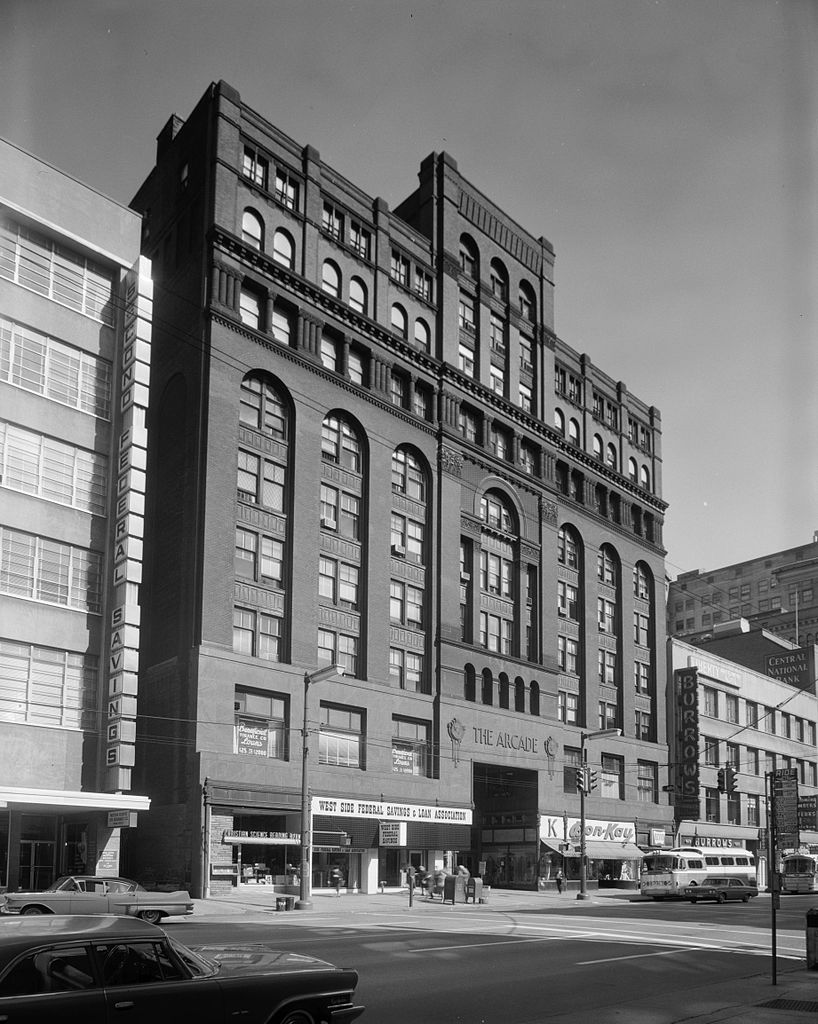
Cleveland Arcade, 401 Euclid Avenue, Cleveland, Cuyahoga County, Ohio (built 1890), Euclid Avenue (South) facade: photo by Martin Linsey for Historic American Building Survey, 7 March 1966 (Library of Congress)
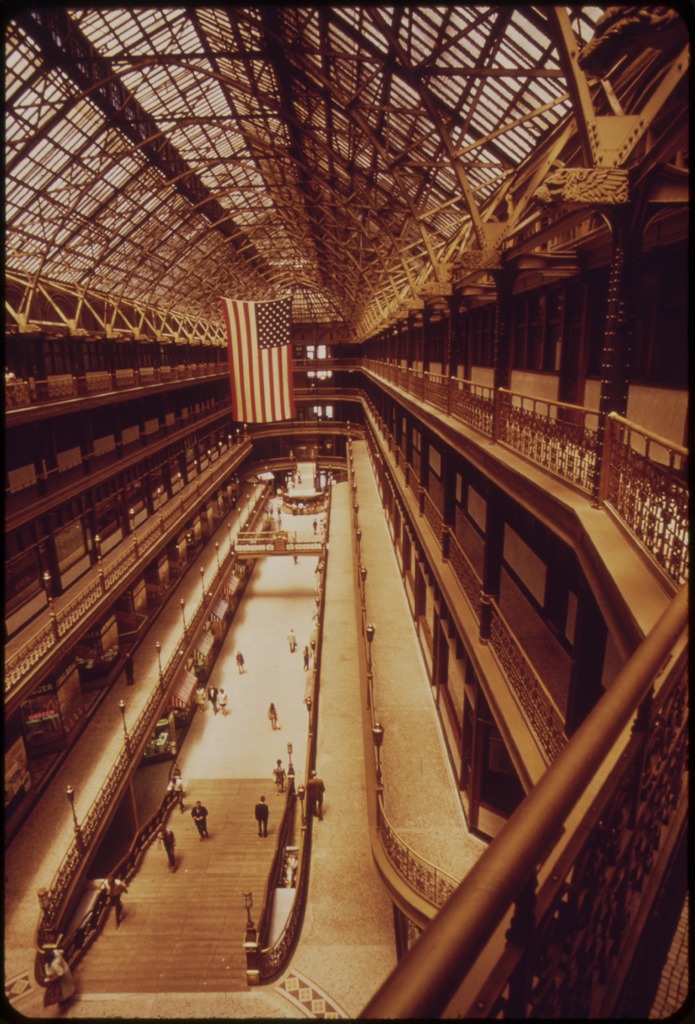
The Arcade -- enclosed shopping area in downtown Cleveland: photo by Frank John Aleksandrowicz for U.S. Environmental Protection Agency, June 1973 (National Archives and Records Administration)
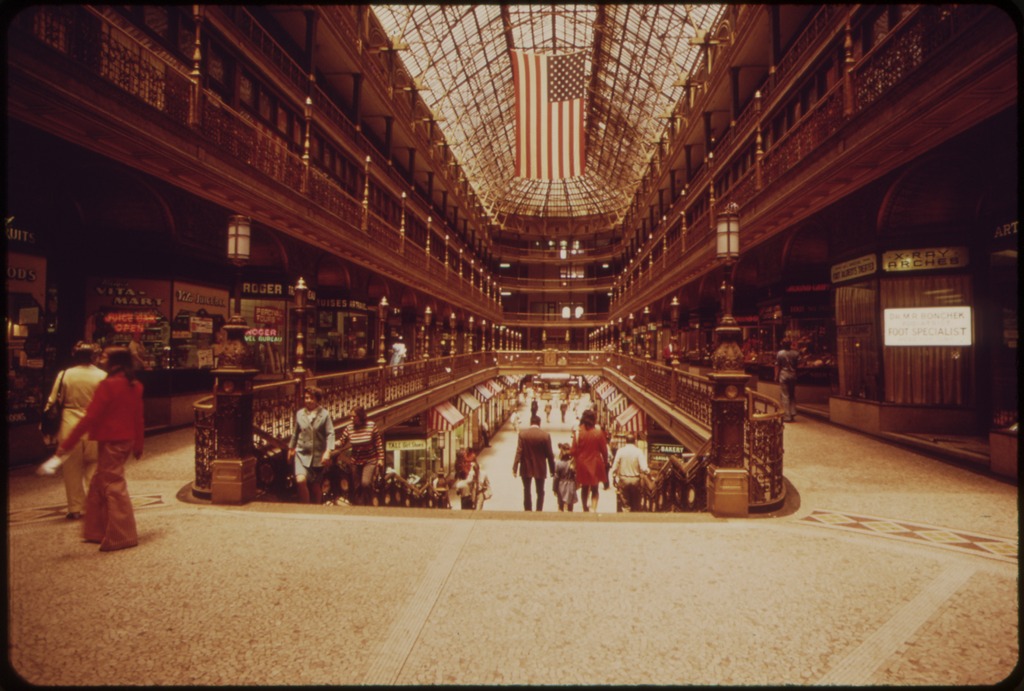
The Arcade -- enclosed shopping area in downtown Cleveland: photo by Frank John Aleksandrowicz for U.S. Environmental Protection Agency, June 1973 (National Archives and Records Administration)
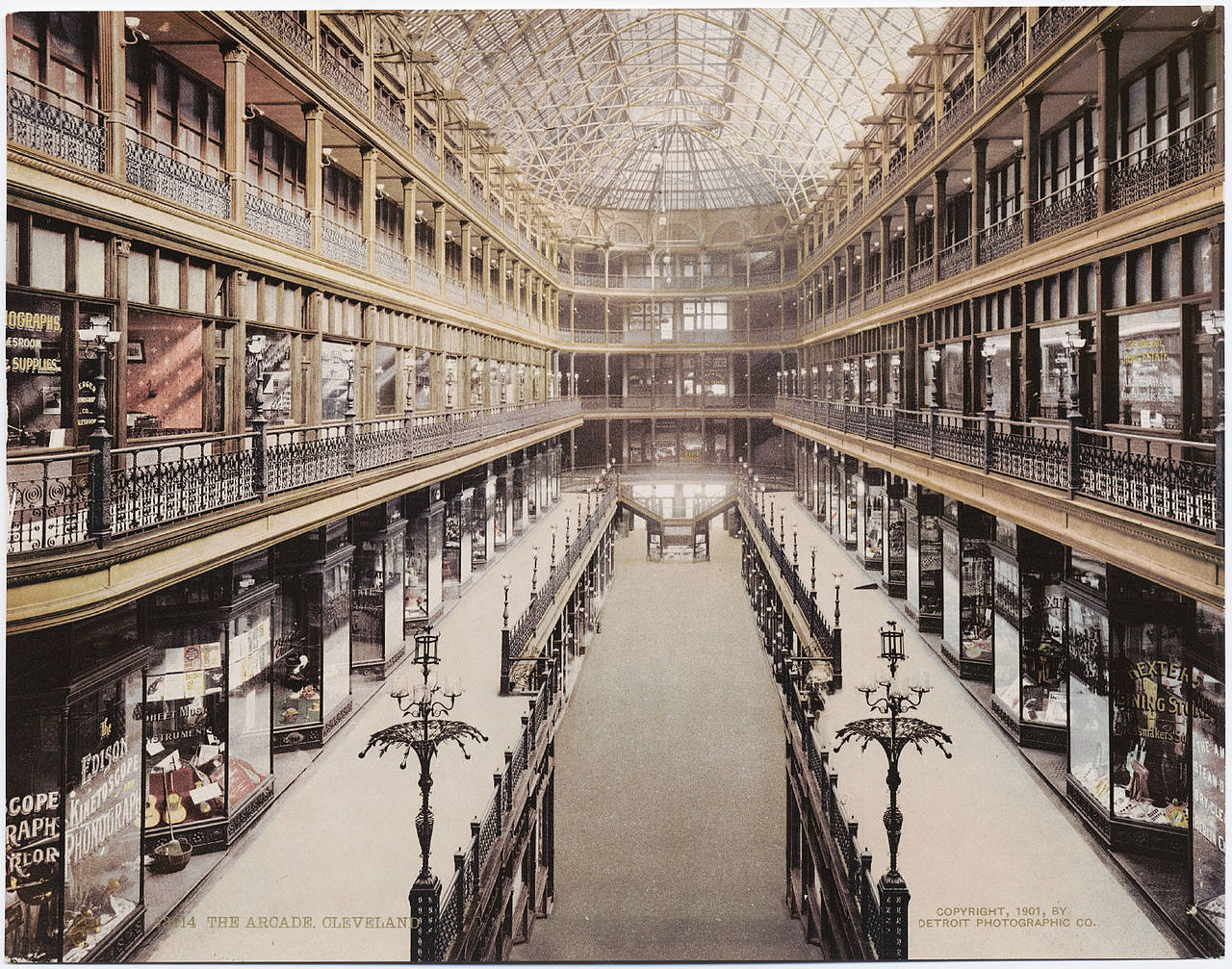
Cleveland Arcade: photochrome view by Detroit Photographic Company, c. 1901 (Beinecke Rare Book & Manuscript Library, Yale University)

Passage Choiseul, Paris (built 1829): photo by Clicsouris, 15 August 2005

Kaisergalerie, Berlin (built 1869-1873): photo by Hermann Rückwardt, 1881; image by Beek100, 28 June 2009

Interno della Galleria Principe di Napoli (built 1877-1883): photo by High Contrast, 2002
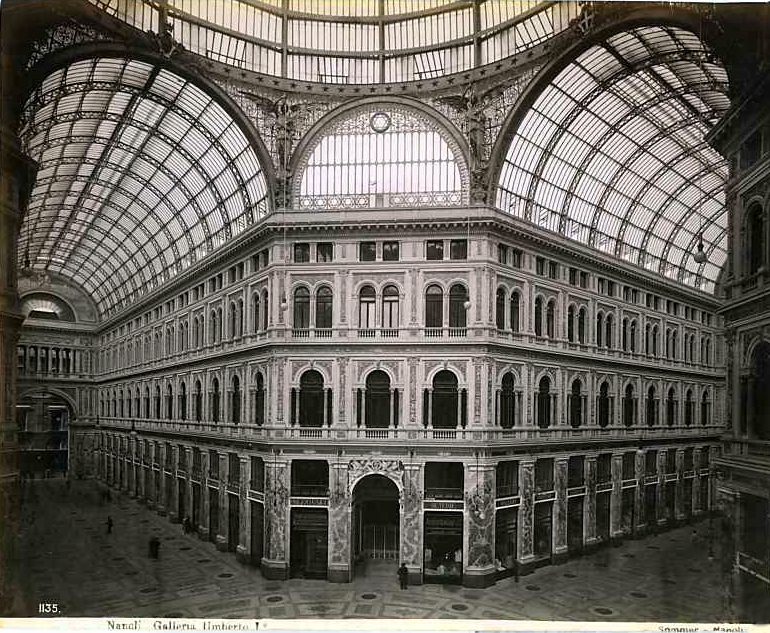
Galleria Umberto I, Napoli (built 1887-1891): photo by Giorgio Sommer, c. 1900; image by G.dallorto, 11 January 2009
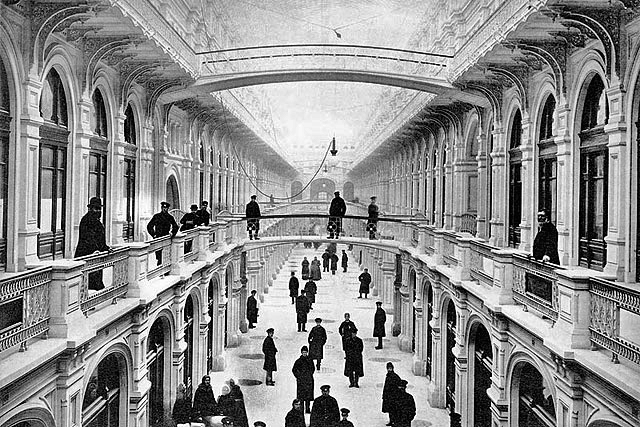
GUM, Moscow (Upper Trading Rows built between 1891 and 1893), interior, with elongated shop galleries bridged by metal-and-glass vaults, designed by Vladimir Shukov: photographer unknown, 1893; image by Gizmolechat, 29 May 2006

GUM, Moscow, structure of Upper Trading Rows, designed by Vladimir Shukov (1893): photo by Donskoy, 21 July 2007
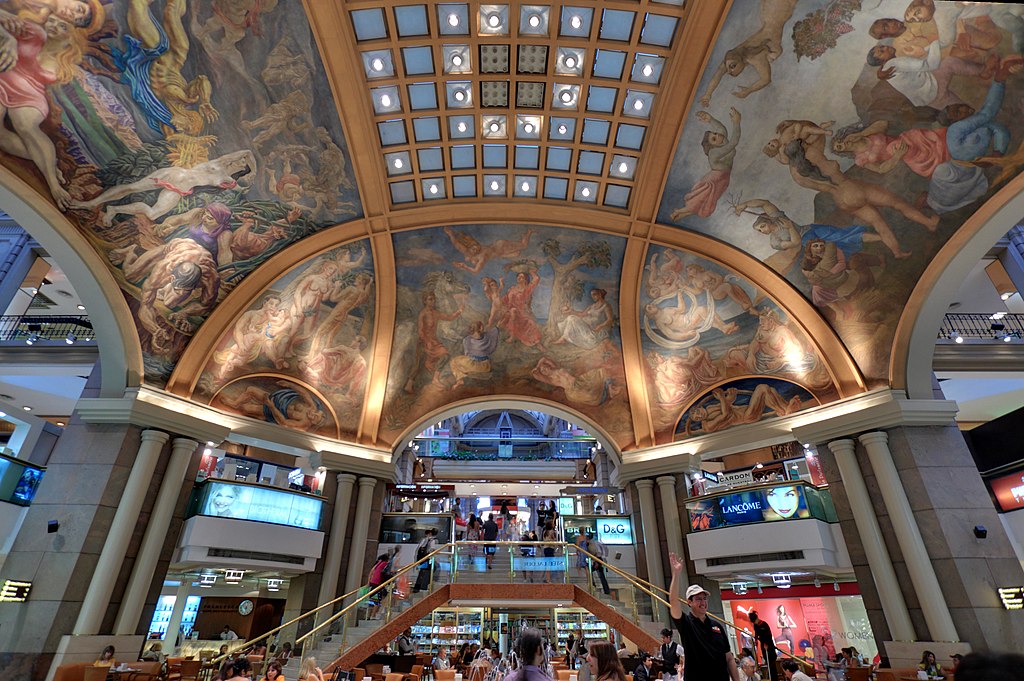
Frescos in the cupola of Galerías Pacifico, Buenos Aires (built 1889): photo by Martin St.-Amant, 22 January 2010

The "Sevens" shopping mall, Düsseldorf, Germany: photo by Till Niermann, 4 August 2007

Toronto Eaton Centre, Toronto: photo by Christopher Woo, 20 July 2006
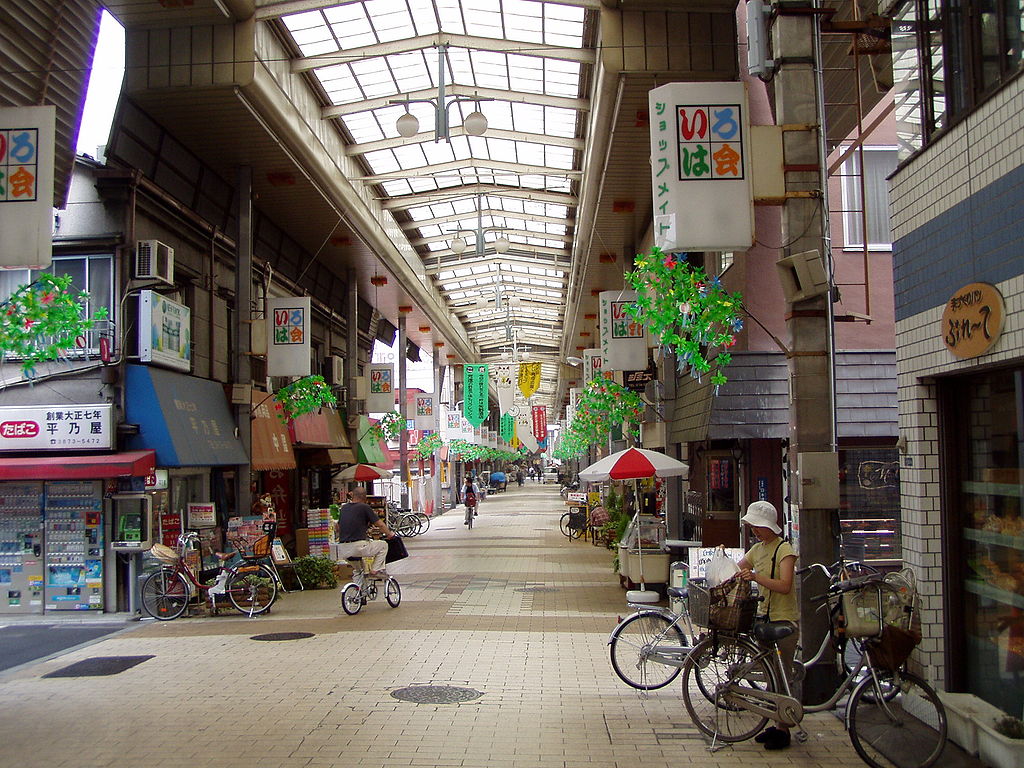
Tokyo shopping arcade: photo by Electroliner, July 2007

Cabot Circus mall, Bristol city centre, England: photo by Jongleur100, December 2008

Belz Factory Outlet Mall, an abandoned shopping mall in Allen, Texas: photo by Justin Cozart, 28 March 2006
Interesting how they look like places of worship when depicted like this. Also interesting to see that they can are actually quite attractive in photographs. I have this odd physical reaction when in malls of needing to exit asap.
ReplyDeleteTom,
ReplyDeleteIn Xanadu did Kubla Khan
A stately pleasure dome decree. . .
Meanwhile, Johnny and I went to see The Adventures of Tintin at the Northgate Mall in San Rafael last week -- complete culture shock ("Give me my scallop shell of quiet") any day, please). . . .
1.4
light coming into sky above still black
plane of ridge, motionless black branch
in foreground, wave sounding in channel
from which into one another,
sense of before after
between what such, all this
left, may seem simply
grey white fog against invisible ridge,
pelican flapping across toward horizon
Beautiful and depressing and wrium.
ReplyDeleteCheck out the West Edmonton Mall, grandaddy of them all!
ReplyDeleteFascinating and informative for me Tom. Like Nin I hate being in these places, but the architectual majesty depicted in some of these shots (the older ones reminding me of the old departed and dearly missed, at least by me, Penn Station in NYC) rivals, as Nin alludes to, some of the more impressive churches and cathedrals. I've been in some of the old European ones and a few of the modern ones here but they make me so agitated and almost dizzy I never really got a chance to appreciate the splendor and monumental aspects of them that make them, good or bad, impressive seen this way (for the most part, the abandoned one(s) even, I've always been a fan of industrial ruins having grown up in North Jersey, as damaging as they have been and can be).
ReplyDeleteMost impressive--especially the last "shot"--a case of "shop till you drop," eh?
ReplyDeleteDoes the condition of contemporary existence creep ever closer to the vertiginous state of dreaming one's lost in the mall or the multiplex after closing time?
ReplyDeleteBenjamin's curious romance with the arcades was founded in experience, research and poetic dreaming. He saw the great arcades of Paris, Berlin, Moscow and Naples as prefigurations of a global/international modernism spawned by late industrial capitalism. Their multiplying representations and semblances, he speculated, disclosed an archeological history that could be read as bearing witness to the phantasmagoria of the present. These first shopping malls, in his vision, spoke to an empty future from a cluttered past, giving voice to the collective origins of commodity fetishism by a kind of materialist ventriloquism.
Great comments here, helping to reinforce one's private reaction (queasy shudder of dread, claustrophobic suffocation) to the mere thought of mall-going.
Esp. noted --
places of worship when depicted like this...odd physical reaction when in malls of needing to exit asap.
In Xanadu did Kubla Khan
A stately pleasure dome decree. . .
Meanwhile, Johnny and I went to see The Adventures of Tintin at the Northgate Mall in San Rafael last week -- complete culture shock
Beautiful and depressing and wrium
Check out the West Edmonton Mall, grandaddy of them all!
the architectural majesty depicted in some of these shots (the older ones reminding me of the old departed and dearly missed, at least by me, Penn Station in NYC) rivals, as Nin alludes to, some of the more impressive churches and cathedrals. I've been in some of the old European ones and a few of the modern ones here but they make me so agitated and almost dizzy I never really got a chance to appreciate the splendor and monumental aspects
the last "shot"--a case of "shop till you drop," eh?
The references to cathedrals/places of worship were echoed here. Angelica pointed out the interesting link between Benjamin's fascination with the architecture of the arcades and his (quite emotional) involvement with the grand church architecture of the Loire valley.
Walter Benjamin: Tears in the Empty Cathedral
And the mall nominated by Conrad is indeed the largest on this continent. Think of the arcade concept translated to the Steppes of Alberta.
Panoramas, Dioramas, Arcades: Water Worlds